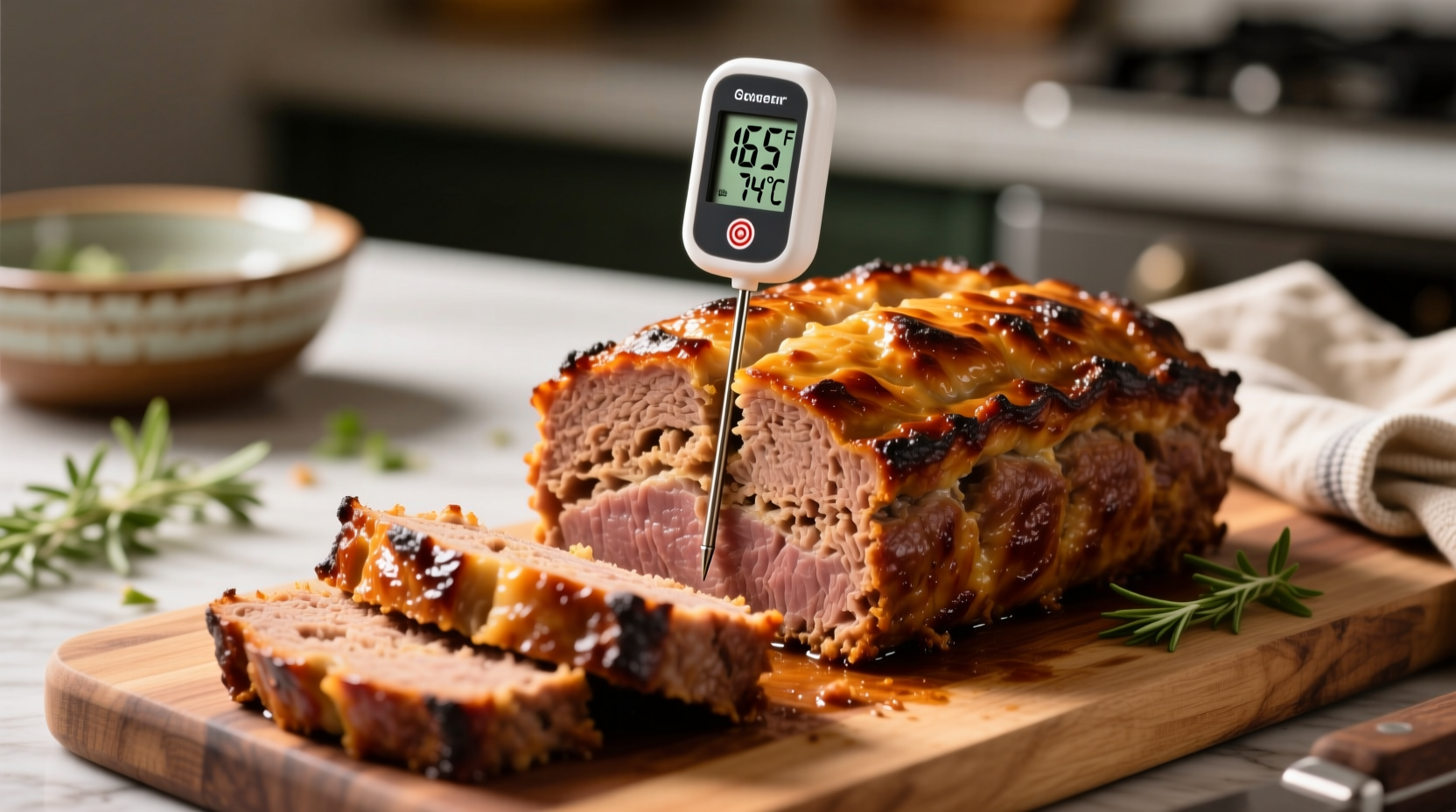The ideal internal temperature for cooking meatloaf is 160°F (71°C). This USDA-recommended temperature ensures your meatloaf is safe to eat while maintaining optimal moisture and texture. Use an instant-read thermometer inserted into the center of the loaf for accurate measurement.
Why 160°F Is Your Meatloaf's Perfect Cooking Target
Getting the temperature right isn't just about doneness—it's a critical food safety measure. When ground meats like those used in meatloaf reach 160°F, harmful bacteria including E. coli and Salmonella are completely eliminated. Unlike whole cuts of meat where surface cooking suffices, ground meats require thorough internal heating because the grinding process distributes potential contaminants throughout the mixture.
The Science Behind Meatloaf Temperature
Understanding what happens at different temperature thresholds helps you appreciate why 160°F is non-negotiable for safety while still delivering quality results:
| Temperature Range | What Happens to Meatloaf | Food Safety Status |
|---|---|---|
| 130-140°F (54-60°C) | Proteins begin to denature, moisture starts releasing | Unsafe - bacteria thrive |
| 145-150°F (63-66°C) | Meat becomes firm, significant moisture loss begins | Unsafe for ground meats |
| 160°F (71°C) | Complete pathogen elimination, optimal texture balance | Safe for consumption |
| 170°F+ (77°C+) | Excessive moisture loss, dry and crumbly texture | Safe but poor quality |
Practical Temperature Monitoring Guide
Follow these steps for perfectly cooked meatloaf every time:
- Preheat your oven to 350-375°F (175-190°C) - this moderate temperature allows even cooking without drying the exterior
- Prepare your thermometer - calibrate if necessary (dip in ice water to verify 32°F/0°C reading)
- Position meatloaf in a shallow baking dish or on a rack to allow air circulation
- Check temperature 10-15 minutes before expected finish time, inserting thermometer into the center
- Remove from oven when thermometer reads 155-158°F (68-70°C) - carryover cooking will bring it to 160°F
- Rest for 10-15 minutes before slicing to allow juices to redistribute
Common Meatloaf Temperature Mistakes
Avoid these frequent errors that compromise both safety and quality:
- Guessing doneness - visual cues like color change aren't reliable indicators of safety
- Using oven temperature alone - oven thermometers often differ from actual oven temperature
- Checking too early - opening the oven repeatedly extends cooking time and dries meat
- Slicing immediately - cutting too soon releases precious juices, resulting in dry meatloaf

Special Considerations for Different Meatloaf Variations
While 160°F remains the universal safety standard for meatloaf made with ground beef, pork, or lamb, certain variations require attention to specific context boundaries:
- Poultry-based meatloaf (chicken or turkey) requires 165°F (74°C) internal temperature per USDA guidelines
- Meatloaf with added moisture (like vegetables or sauces) may need 5-10 additional minutes cooking time
- Large or dense meatloaves (over 2 lbs) benefit from checking multiple internal points
- Convection ovens typically cook 25°F hotter, so reduce oven temperature setting by 25°F
Essential Tools for Perfect Meatloaf Temperature Control
Invest in these temperature monitoring tools for consistent results:
- Instant-read digital thermometer - provides readings in 3-5 seconds (Thermoworks Mk4 is industry standard)
- Oven thermometer - verifies your oven's actual temperature setting
- Leave-in probe thermometer - monitors temperature throughout cooking without opening oven
According to the USDA Food Safety and Inspection Service, "Ground meats must reach 160°F as measured with a food thermometer to destroy harmful bacteria." This guideline is based on extensive food safety research documented in the USDA's Bacteria and Food Safety guidelines.
The Critical Resting Period
Never skip the resting period after removing meatloaf from the oven. During these 10-15 minutes:
- Internal temperature continues rising 5-10 degrees (carryover cooking)
- Proteins relax, allowing juices to redistribute throughout the loaf
- Texture firms up slightly, making cleaner slices possible
- Flavors continue to develop and meld
Cutting into meatloaf too soon releases accumulated juices onto your cutting board rather than staying within the meat structure, resulting in dry, crumbly slices.
Temperature Troubleshooting Guide
Encountering issues with your meatloaf's temperature? Try these solutions:
- Temperature not rising - check oven calibration; your oven might run cooler than indicated
- Exterior overcooking before interior reaches temp - try lowering oven temperature to 325°F
- Uneven temperature readings - mix ingredients thoroughly and pack loaf evenly
- Temperature dropping after removal - your thermometer might need recalibration











 浙公网安备
33010002000092号
浙公网安备
33010002000092号 浙B2-20120091-4
浙B2-20120091-4